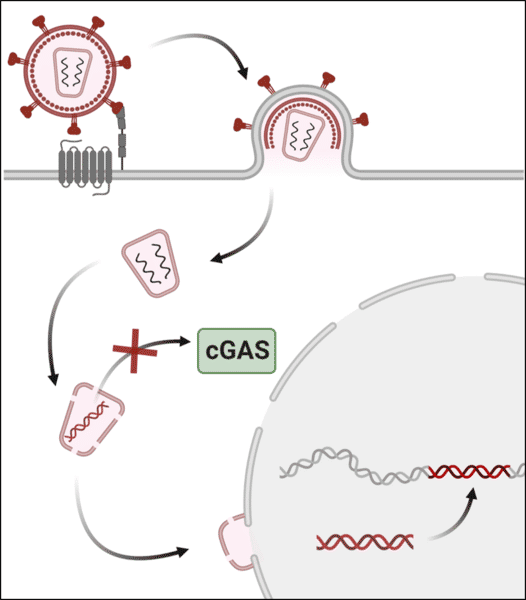Defense against the enemy within
Scientists discover a new enzyme that helps cells fight genomic parasites
Advertisement
The research teams of Professor René Ketting at the Institute of Molecular Biology (IMB) in Mainz, Germany, and Dr. Sebastian Falk at the Max Perutz Labs in Vienna, Austria, have identified a new enzyme called PUCH, which plays a key role in preventing the spread of parasitic DNA in our genomes. These findings may also reveal new insights into how our bodies detect and fight bacteria and viruses to prevent infections.
Our cells are under constant attack from millions of foreign intruders, such as viruses and bacteria. To keep us from getting sick, our bodies have an immune system – a whole army of cells that specializes in detecting and destroying these invaders. However, our cells face threats not only from external enemies but also from within.
Genomic parasites populate a large part of the genome
An amazing 45 percent of our genome is comprised of thousands of genomic parasites, i.e., repetitive DNA sequences called transposable elements (TEs). TEs are found in all organisms but have no specific function. They can, however, be dangerous. TEs are also called "jumping genes" because they can copy and paste themselves into new locations in our DNA. This is a major problem because it can lead to mutations that cause our cells to stop working normally or to become cancerous. As such, almost half of our genome is engaged in a constant guerrilla war with the other half as TEs seek to multiply, while our cells try to prevent them from spreading.
How do our cells combat these internal enemies? Fortunately, our cells have evolved a genomic defense system of specialized proteins whose job it is to hunt down TEs and prevent them from replicating. In a new paper published in Nature, René Ketting and Sebastian Falk together with their research teams report their discovery of PUCH – a completely new, previously unknown type of enzyme, which is key to this genomic defense system. They found that PUCH plays a crucial role in producing small molecules called piRNAs, which detect TEs when they attempt to "jump". They then activate the genomic defense system to stop TEs before they paste themselves into new locations in our DNA.
The researchers discovered PUCH in the cells of the roundworm C. elegans, a simple invertebrate often used in biological research. However, the findings may also shed light on how our own immune system works. PUCH is characterized by unique molecular structures called Schlafen folds. Enzymes with Schlafen folds are also found in mice and humans, where they appear to play a role in innate immunity, the body's first line of defense against viruses and bacteria. For example, some Schlafen proteins interfere with the replication of viruses in humans. On the other hand, some viruses such as monkeypox viruses, for example, may also use Schlafen proteins to attack the cell's defense system. René Ketting suspects that Schlafen proteins may have a wider, conserved role in immunity in many species, including humans.
"Schlafen proteins may represent a previously unknown molecular link between immune responses in mammals and deeply conserved RNA-based mechanisms that control TEs," said Ketting, who is also a Professor of Biology at Johannes Gutenberg University Mainz (JGU). If so, Schlafen proteins may represent a common defense mechanism against both external enemies like viruses and bacteria as well as internal ones such as TEs. "It's conceivable that Schlafen proteins have been repurposed into enzymes that protect cells from infectious DNA sequences, such as TEs," added Sebastian Falk. "This discovery may profoundly impact our understanding of innate immune biology."



























































